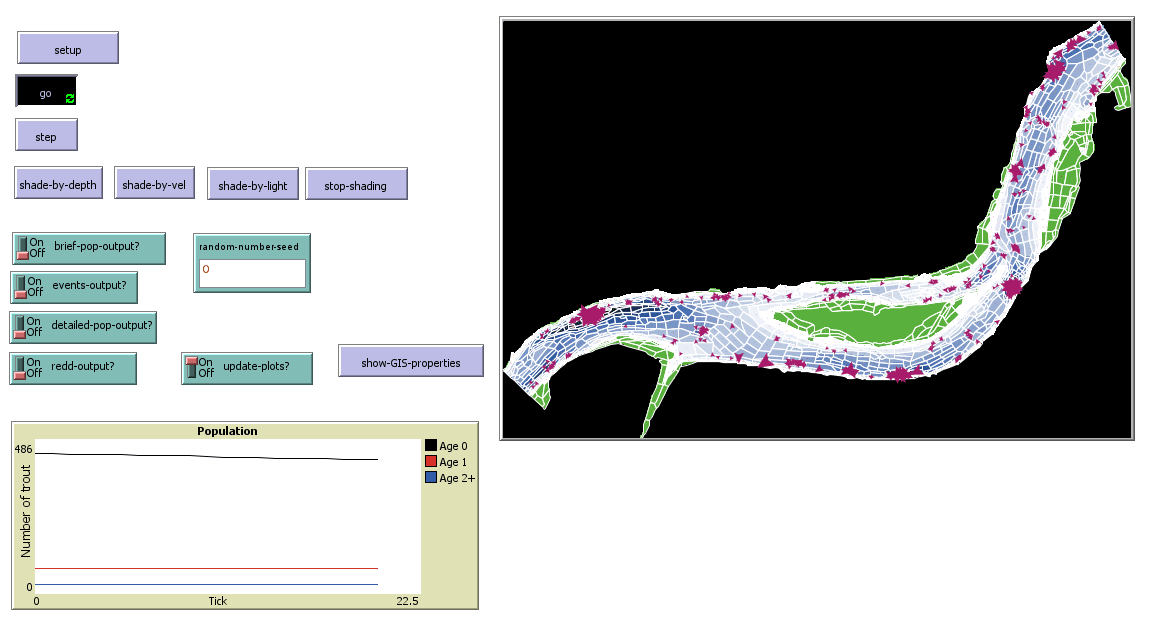Breadcrumb
Individual-Based Ecological Modeling at Cal Poly Humboldt
The Humboldt Mathematics Department has a long tradition of collaborating with faculty in Wildlife, Fisheries, and other departments to produce and use ecological models, and especially individual-based models (IBMs; also known as agent-based models).
This tradition goes back to the pioneering work of Roland Lamberson and colleagues on a variety of bird and mammal models in the early 1990s. Steve Railsback and Bret Harvey joined the team in the late 1990s, focusing (but not exclusively) on inSTREAM and inSALMO, our river management models of salmonid fish. We collaborate closely with other individual-based modeling centers around the world (see Who We Are). In 2005, Volker Grimm and Steve Railsback published Individual-based Modeling and Ecology, the first monograph on IBMs. They also wrote the first textbook for agent/individual-based modeling, which is now in its second edition. Steve Railsback and Bret Harvey have now published Modeling Populations of Adaptive Individuals, a monograph on IBMs that include adaptive tradeoff decisions, in Princeton University Press's Monographs in Population Biology series. According to Google Scholar, our publications have been cited over 15,000 times.
Math Department faculty teach modeling classes and collaborate with faculty in Wildlife, Fisheries, and other departments, and co-supervise graduate students who include modeling in their research. More information is at the Mathematics Department web site, and example student projects are here.
Research Goals
Developing a conceptual and theoretical basis for individual-based ecology. Differential calculus provides the conceptual basis for classical ecological models, but IBMs have lacked such a basis. We help develop and promote standard concepts for thinking about and designing IBMs.
Applying IBMs to conservation and management issues. We developed several generations of stream salmonid IBM to address such management questions as: How do the magnitude and timing of instream flow releases affect populations? What are the cumulative effects of changes in flow and temperature on fish populations? What effects do habitat alterations (e.g., loss of pools, increased turbidity), competition, predation, and habitat connectivity have on population dynamics? We have also developed management models for river-breeding frogs and birds that provide pest control services on coffee farms.
Using IBMs to test and develop ecological theory. We use IBMs as 'virtual ecosystems' for testing ecological theory, especially theory for how organisms make adaptive decisions. Our focus is on "across-level" theory that links behavioral ecology to population ecology.
Developing software and software engineering approaches for IBMs. Software engineering is much more important for IBMs than for other ecological models. We develop software engineering guidance, and flexible and re-usable code for ecological models. We now collaborate with the developers of our preferred platform, NetLogo, and its new user forum at: NetLogo's Official Forum.
Integrating individual-based approaches in ecological and modeling education. We provide several kinds of support for users of our textbook.
User interface of our InSTREAM 7 trout model






